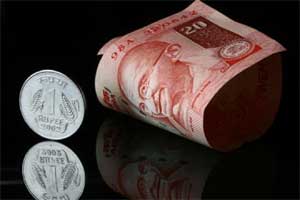Macro-economic headwinds — especially surging oil prices and a weakening Indian rupee — are likely to compound the problems for investors across asset classes who are already facing the onslaught of the dipping equity markets.
While the stock markets have declined by over 2,300 points or 8 per cent over the last three weeks to hit a four-month low, the rupee has lost almost 4 per cent against the dollar over the last two months and is now trading at close to 20-month low. Similarly, Brent crude prices have climbed to levels that it stood at five months back in December 2014. The Indian rupee breached the 64-mark against the dollar on Thursday while the Brent crude was up 50 cents a barrel at $68.27, marking its 2015 high.
Although experts feel that the broader economic fundamentals remain intact for now, if the adverse trend of rupee and crude continues, it would put some pressure on the economy going forward.
“Currently there is a lot of noise and volatility around crude. We are working on the assumption that the average crude price for the year will be between $60 and $65 per barrel. However, if that is breached then it will have implications on current account deficit, fiscal situation and even inflation,” said DK Joshi, chief economist at Crisil, adding that the markets are likely to remain volatile and will be determined by global news flows. This might in turn force the Reserve Bank of India to delay any further monetary easing plans.
Currency experts, meanwhile, see the rupee going further down from the 64 mark. “There is a risk aversion across all asset classes and there is pressure on rupee. I think it may breach the 65 mark against the dollar in the near term,” said Hemal Doshi, current strategist at Geojit Comtrade.
However, according to a Religare Research report, the RBI is not likely to intervene much on the rupee front and the currency might weaken to around 66 against the dollar. “Measures from the central bank won’t be very aggressive as the rupee is already overvalued in REER terms. Rupee is likely to trade volatile as long as the global debt market rout continues and is likely to weaken further in the coming weeks to as low as 65 to a dollar and may even extend its weakness to 66 levels,” said the report.
Weakening rupee and rising crude prices are also likely to result into FII fund outflow from the equity and debt markets and bring the markets down further. Foreign institutional investors (FIIs) have already pulled out a net of over Rs 13,000 crore from Indian equities over the last 15 sessions (except for the strong inflow on April 21 on account of stake purchase in Sun Pharmaceuticals).
For Updates Check Banking & Finance News; follow us on Facebook and Twitter
